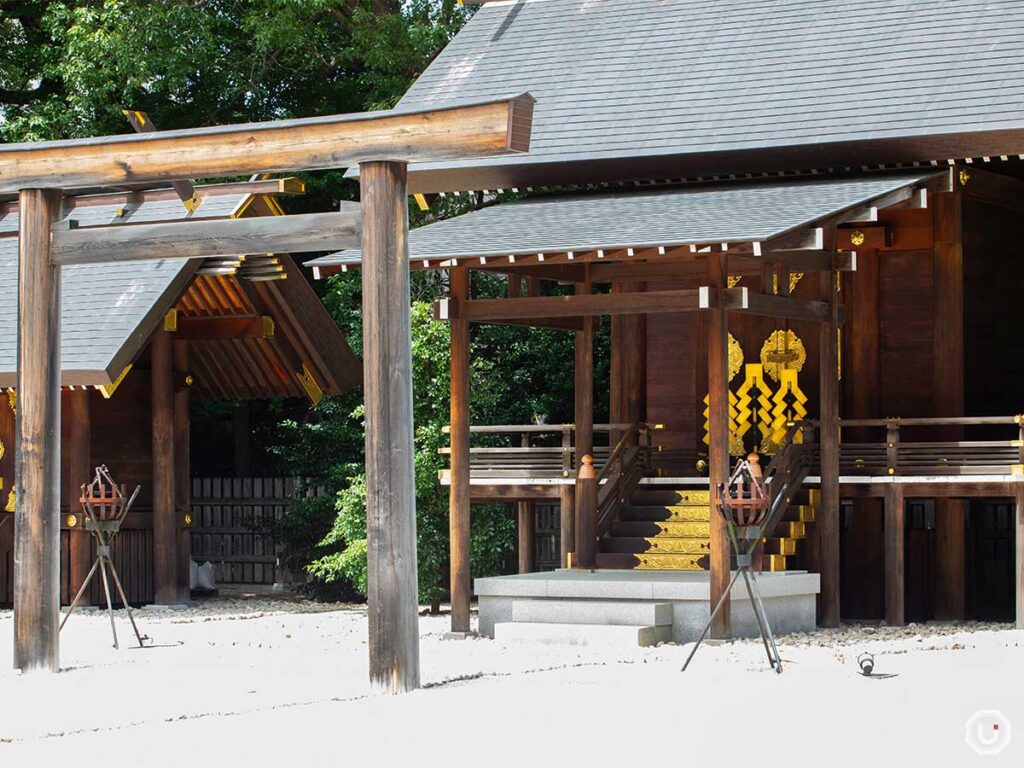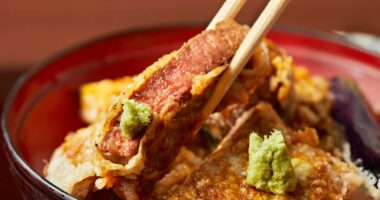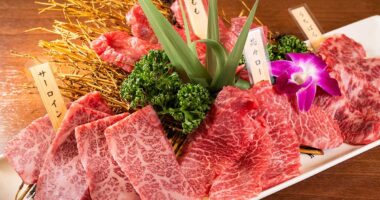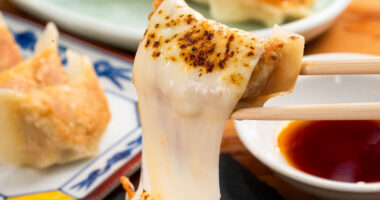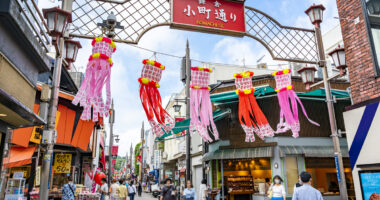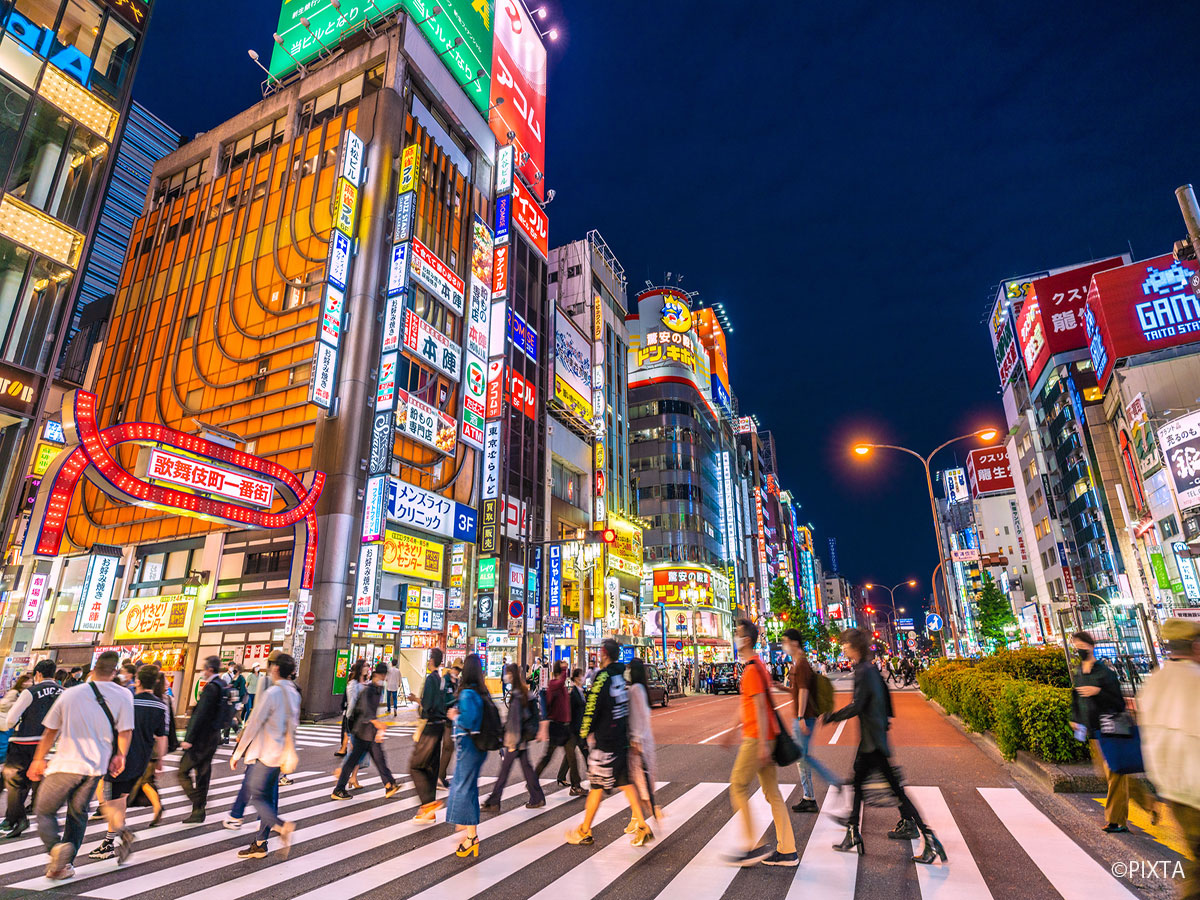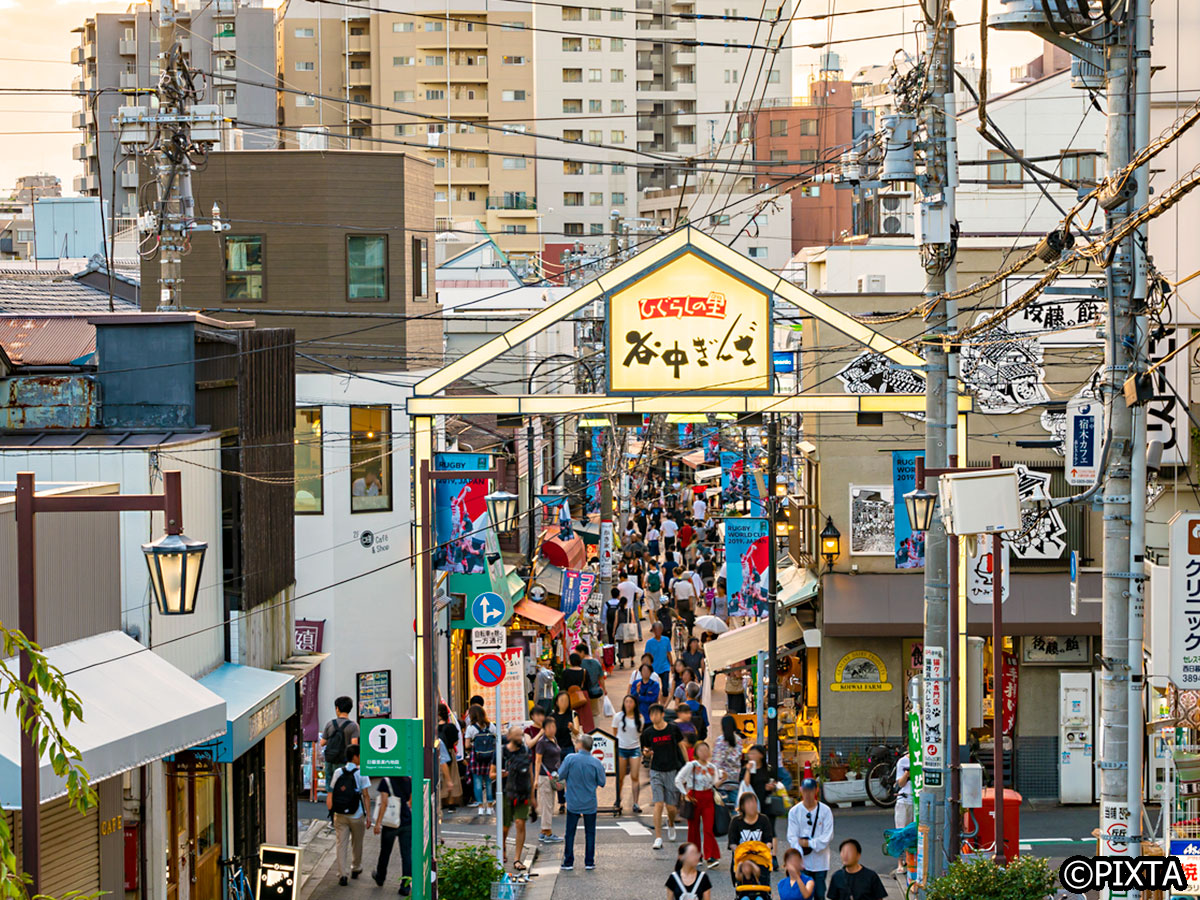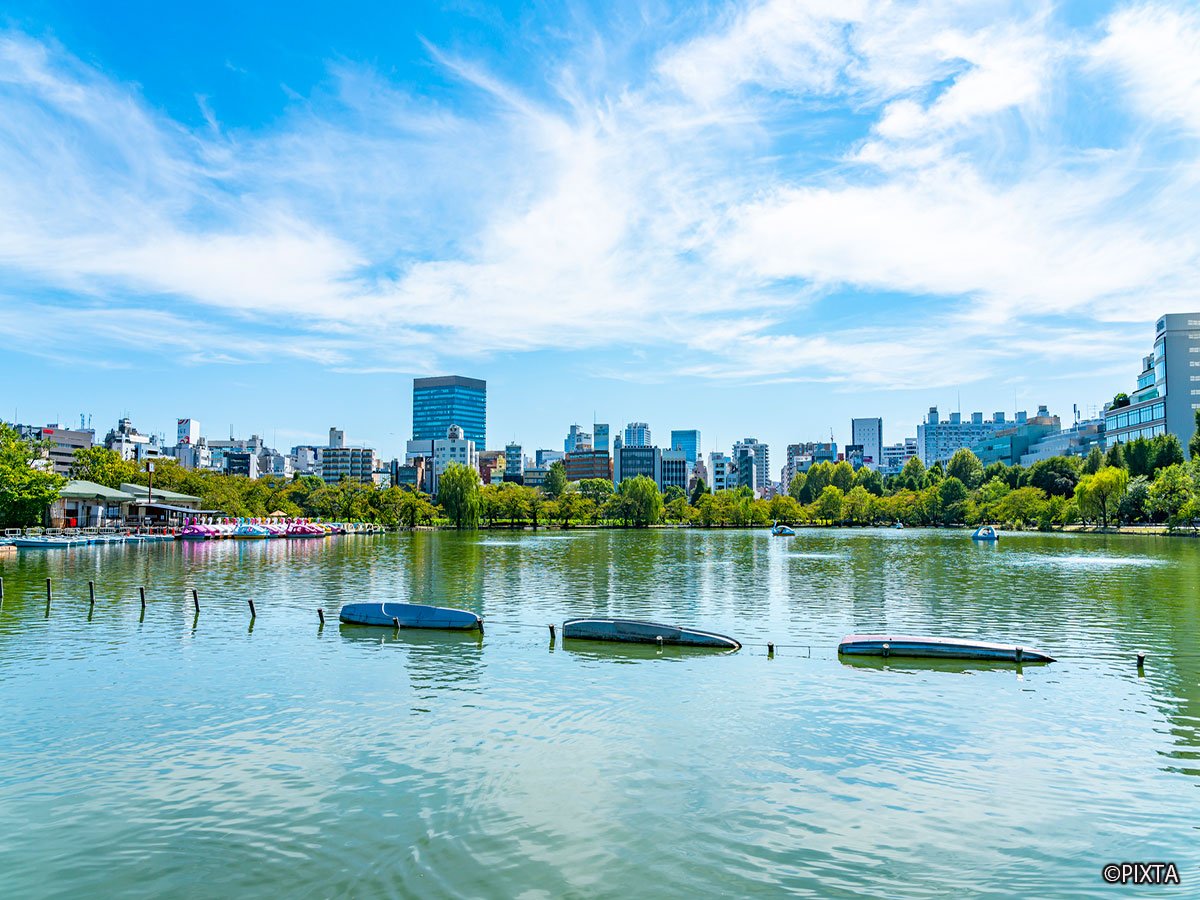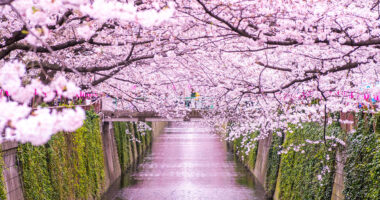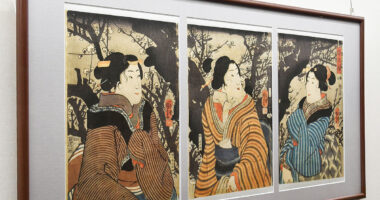In Japan, it’s believed that there are many gods, a concept captured in the phrase yaoyorozu no kami, literally meaning “eight million gods.” Among these, however, the goddess of the sun, Amaterasu Ōmikami, is considered the supreme deity.
One notable place where Amaterasu Omikami is enshrined is Asagaya Shinmeigu Shrine, in the Asagaya neighborhood of Tokyo. The shrine is known for bringing various blessings, including protection against misfortune, success in relationships, and academic achievement.
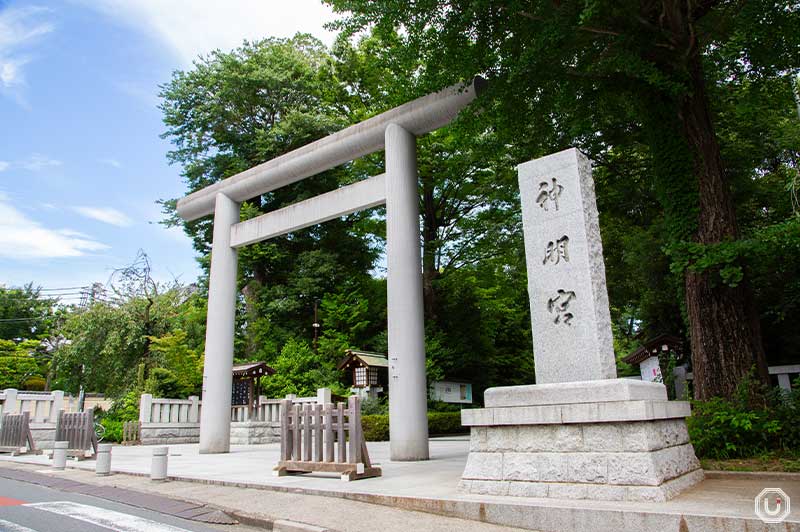
The main hall enshrining the supreme deity, Amaterasu Ōmikami
When visiting the shrine, start by tidying your clothes in front of the torii gate at the entrance to the shrine grounds, then bow lightly before entering the shrine grounds.
Next, cleanse your hands and rinse your mouth at the purification water basin called chōzuya, meaning “hand water station.” This ritual symbolizes the purification of your heart. Instructions on how to perform it are displayed at the chozuya for your reference.
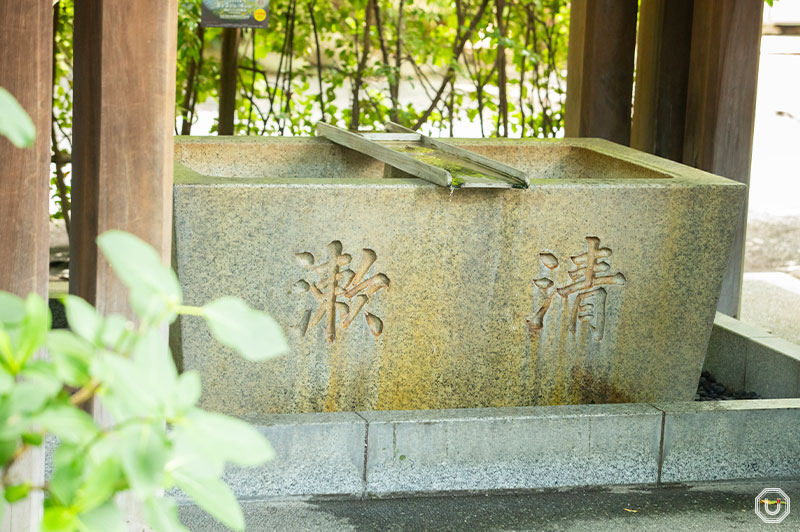
Chozuya
As you proceed further into the shrine’s grounds, you’ll see the worship hall draped with a large banner.
The proper way to pay your respects at Asagaya Shinmeigu Shrine involves a two-step routine. First, place a monetary offering in the offertory box. Second, make two deep bows, two claps, and one final deep bow. To show extra reverence, you can also make a shallow bow before and after this routine.
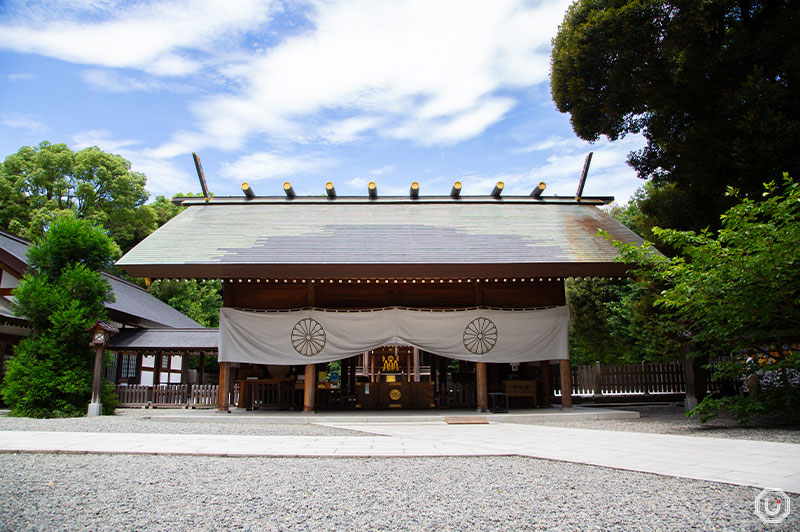
Worship hall
From the worship hall, you can see three buildings, with the central one enshrining Amaterasu Omikami. The torii gate in front of the main hall originally came from Ise Jingū, the most revered shrine in Japan. Asagaya Shinmeigu Shrine has strong ties with Ise Jingu, reflected in various aspects of its grounds.
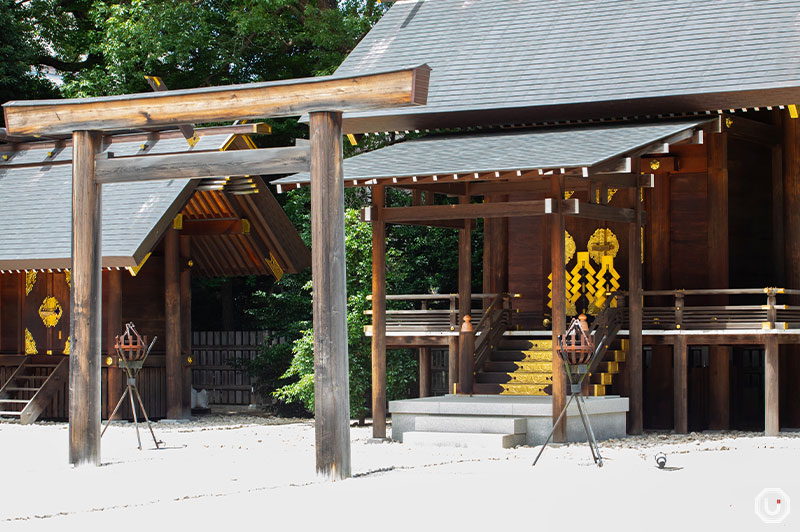
On the right side, you’ll find a auxiliary shrine dedicated to Tsukuyomi no Mikoto, Amaterasu’s brother, the god of the moon. On the left is another auxiliary shrine dedicated to Susanoo-no-Mikoto, the god of the sea and storms, also Amaterasu’s brother.
The design of each of these smaller shrines reflects their respective deities, with the right shrine incorporating the moon and the left shrine featuring the sea. Meanwhile, the main hall, dedicated to the sun goddess Amaterasu, is adorned with sun motifs. Why not take a moment to appreciate the different designs of each building?
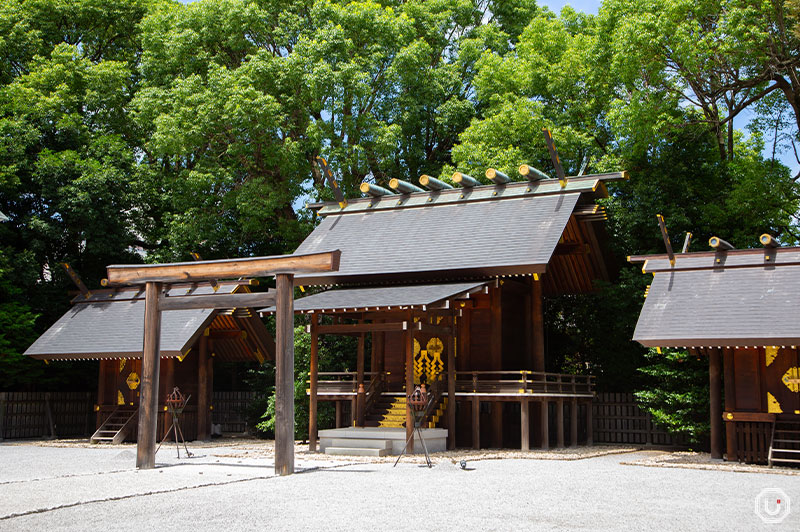
Boost your luck with lace bracelet amulets trending on social media!
Asagaya Shinmeigu Shrine offers a variety of popular omamori (amulets available at Japanese shrines and temples and granting good luck or protection), many of which are trending on social media. The most sought-after one is the “Kami Musubi lace bracelet amulet,” a lucky charm you can wear on your wrist.
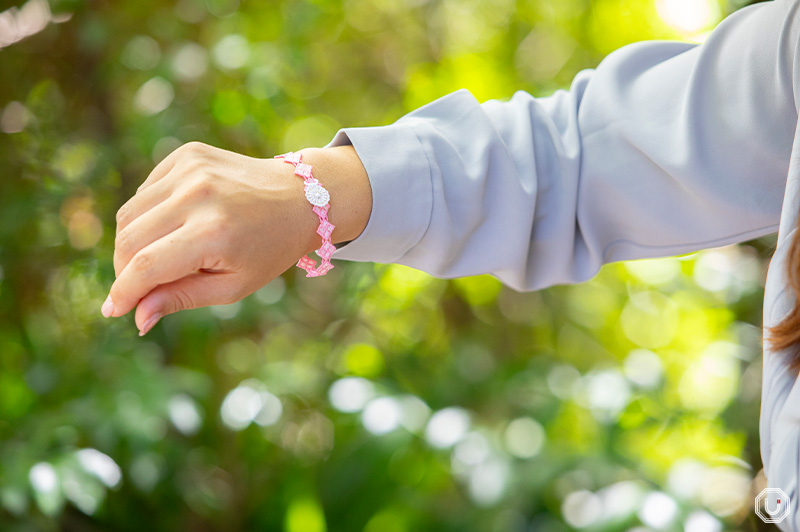
“神むすび レースブレスレットお守り(撫子),” Kami Musubi lace bracelet amulet (nadeshiko pink) 1,200 JPY
Each amulet is handmade by shrine maidens with heartfelt care. Furthermore, they’re imbued with the blessing that your fortune will improve through your connection with the gods. You can wear these unique amulets on your wrist or attach them to your bag as a charm.
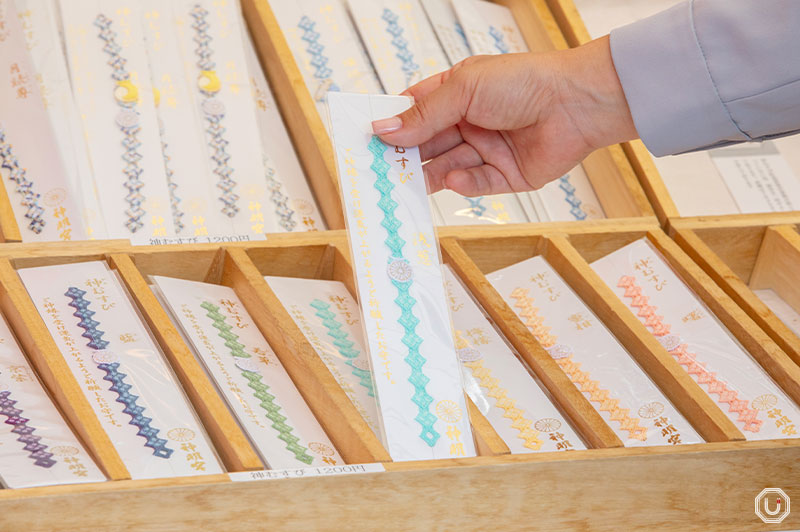
There are over 10 designs to choose from, including some seasonal ones. Each color carries the same blessing, so feel free to select your favorite.
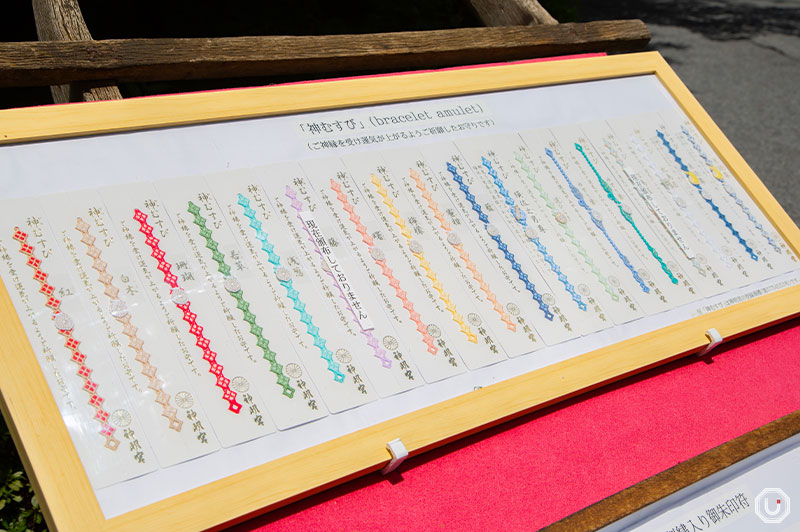
Another option is the “Apple Leather Amulet,” made from recycled apples left over from juice production. This eco-friendly amulet comes in four colors. It’s a perfect charm to hang on your bag.
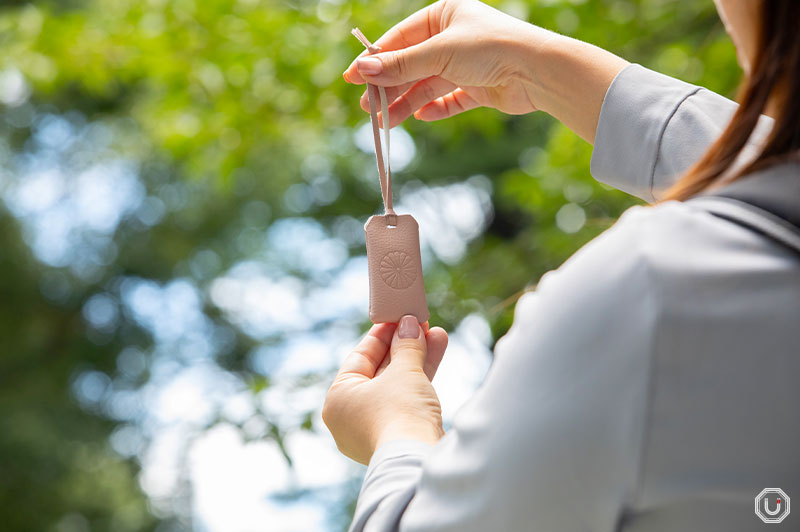
“アップルレザー御守,” Apple Leather Omamori 2,000 JPY
Other popular charms include the “Buji Kaeru Mamori,” a safe travel amulet that plays on the Japanese words kaeru, meaning both “frog” and “to return home,” and buji, meaning “safely.” The charm features a cute frog character watching over you from inside the amulet.
There’s surely an amulet at this shrine that suits your wishes.
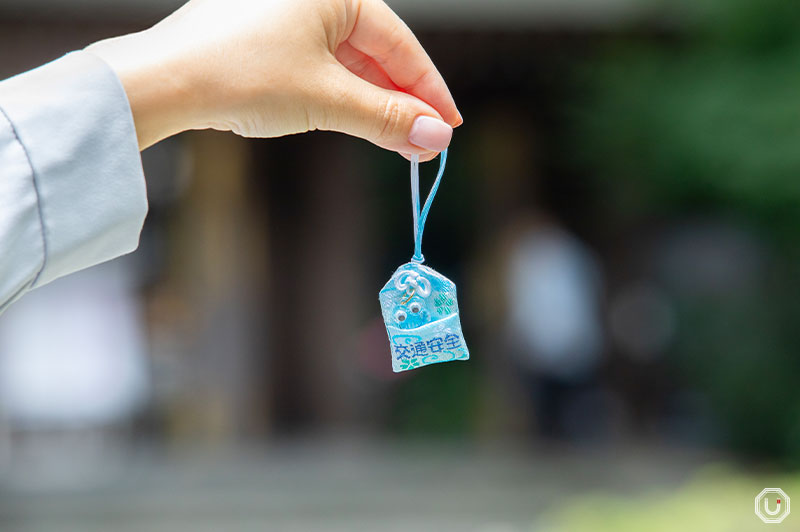
“無事かえる守,” Buji Kaeru Omamori 800 JPY
Moon-themed fortune slips and votive tablets
One of the most popular omikuji (fortune slips available at Japanese shrines or temples) at Asagaya Shinmeigu Shrine is the “Tsuki Mikuji” (tsuki meaning “moon” or “month”), which reveals your fortune based on your birth month. Choose your month’s color from the 12 available.
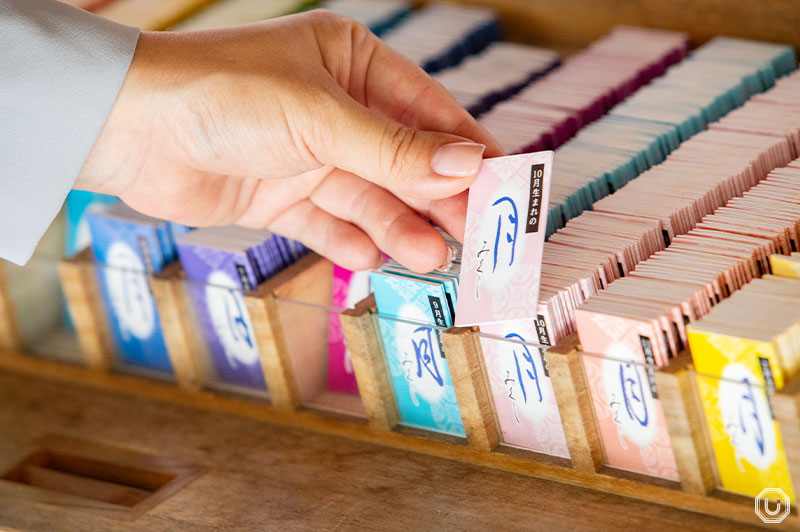
“月みくじ,” Tsuki Mikuji 100 JPY
After drawing your fortune and reading it, use the musubidokoro (literally, “tying place”) to tie it up. If you draw a bad fortune, don’t worry—misfortune is said to be followed by good luck, so take it as a sign to stay positive and reflect on the omikuji’s message.
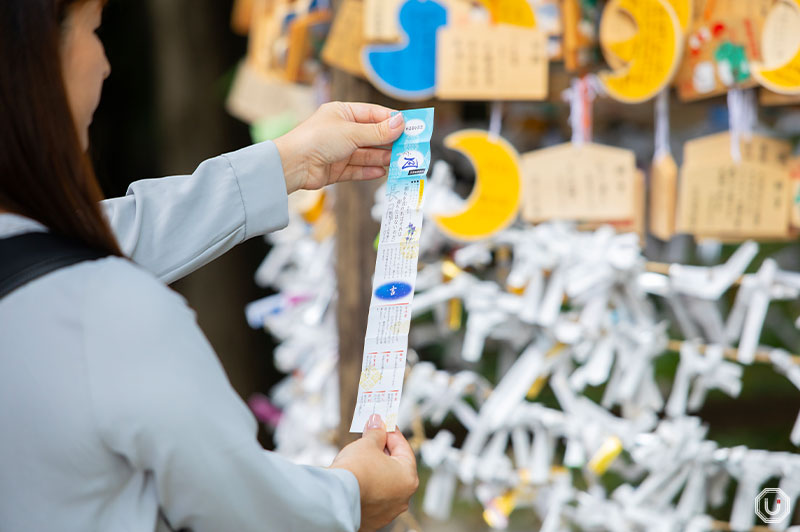
The shrine also offers five different designs of ema (wooden votive tablets available at Japanese shrines or temples), including shapes like waves and pine trees. The most popular design is the “Tsuki Ema,” the moon-shaped tablet. When you visit, consider writing your wish on one of them.
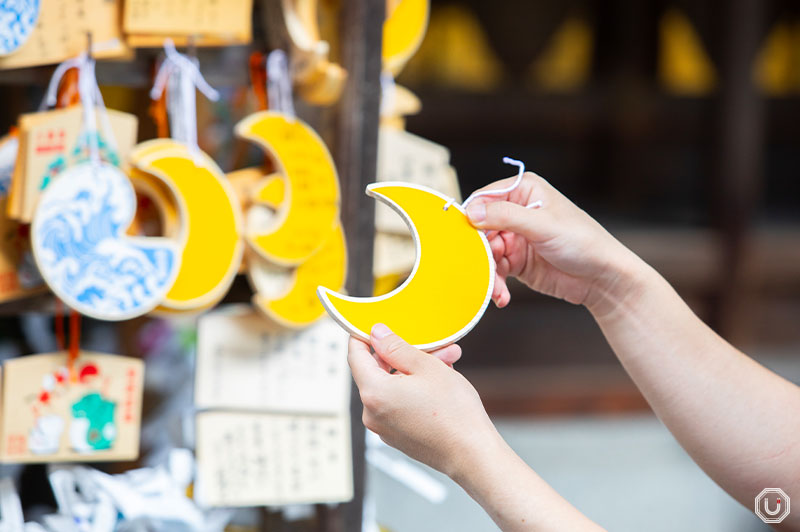
“月絵馬,” Tsuki Ema 500 JPY
Another highlight of Asagaya Shinmeigu Shrine is its extensive variety of goshuin (a special seal obtained at Japanese shrines or temples) that you can receive as proof of your visit. From simple designs featuring calligraphy to embroidered seals and seasonal designs, there’s a wide range to choose from.
You’ll want to visit again and again to collect them all!
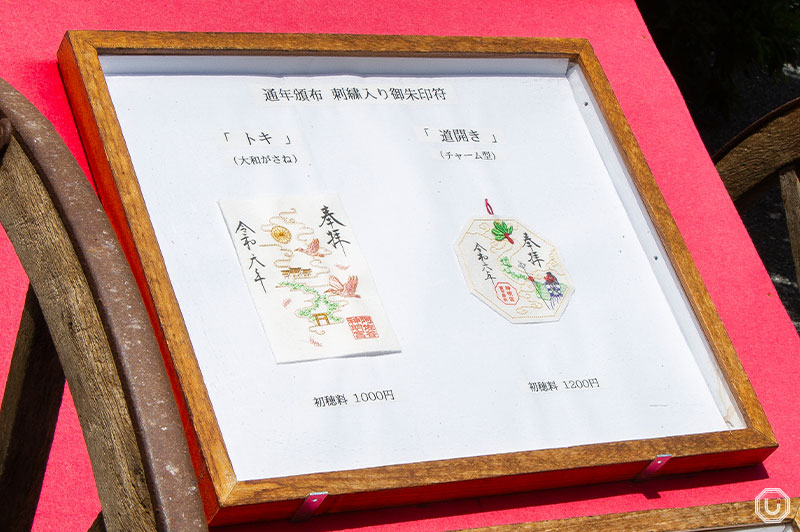
The shrine also offers a variety of goshuinchō (seal book) with about 10 designs available. Among the year-round designs is a charming one featuring a rabbit holding an arrow, which was gifted by Ise Jingu.
You can obtain goshuin and goshuincho at the shrine office, located to the left as you pass through the torii gate.
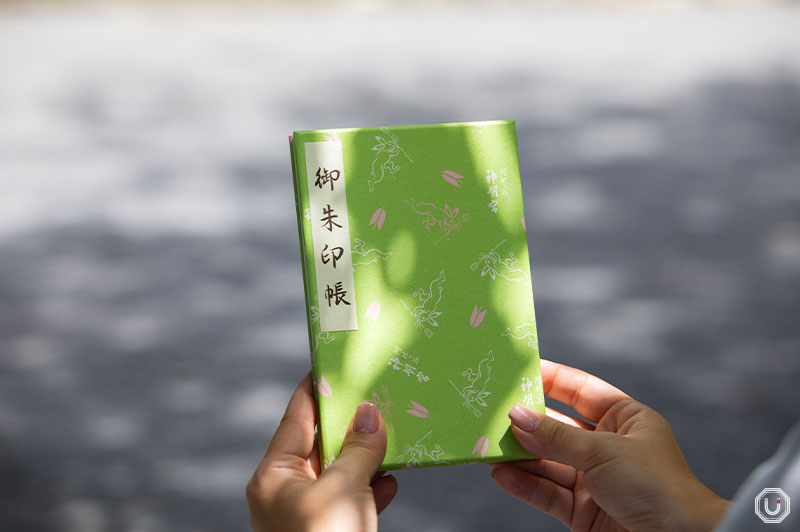
Goshuincho 2,000 JPY
Pray to the gods of learning and guidance
The grounds of Asagaya Shinmeigu Shrine are home to several smaller shrines. Near the main torii gate stands Kitano Shrine, notable for its pentagonal torii gate. The pentagonal shape symbolizes success in exams, as the word gokaku, meaning “pentagon,” sounds like gōkaku, which, in an academic context, means passing an exam.
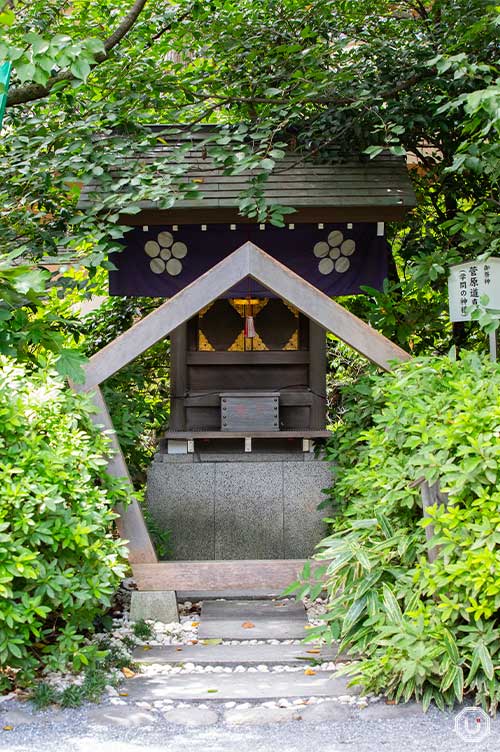
Kitano Shrine
It’s not just wordplay—Kitano Shrine is dedicated to Sugawara no Michizane, a real historical figure from the Heian period who was known for his scholarly achievements. After his death, he was enshrined as a god of learning and literary talent.
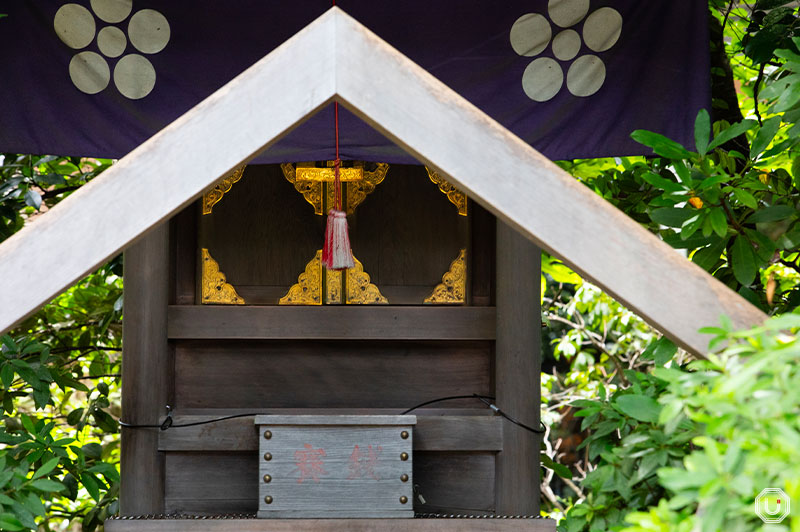
Another smaller shrine within the grounds is Sarutahiko Shrine. This shrine is dedicated to Sarutahiko Ōkami, the deity who guides everything toward the best possible outcome, and his descendant, Ōta no Mikoto. If you’re starting something new or want things to go smoothly, a visit to this shrine is highly recommended.
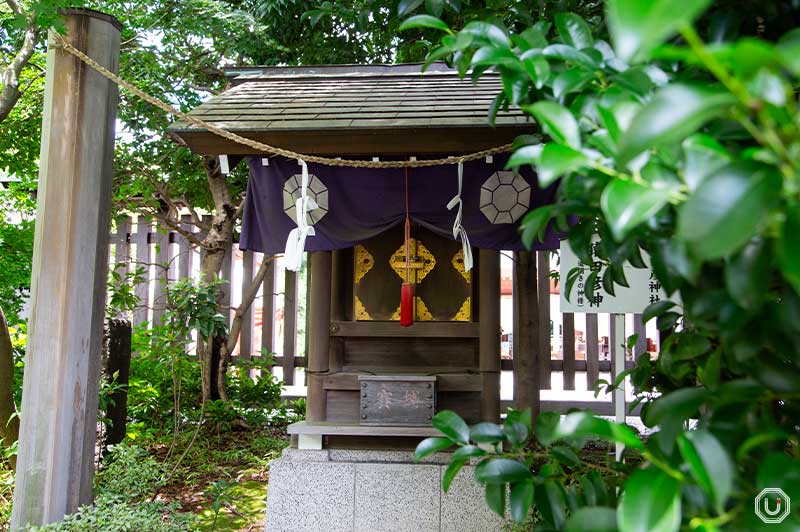
Sarutahiko Shrine
A hub for Japanese traditional culture: the Noh theater
The shrine’s peaceful grounds, covering 2.45 acres (nearly a hectare), offer a retreat from the city’s hustle and bustle. Within this vast area is a Noh theater, used for performances of Noh and Kyogen, traditional Japanese stage arts, as well as for the performance of traditional arts as offerings to the gods during festivals.
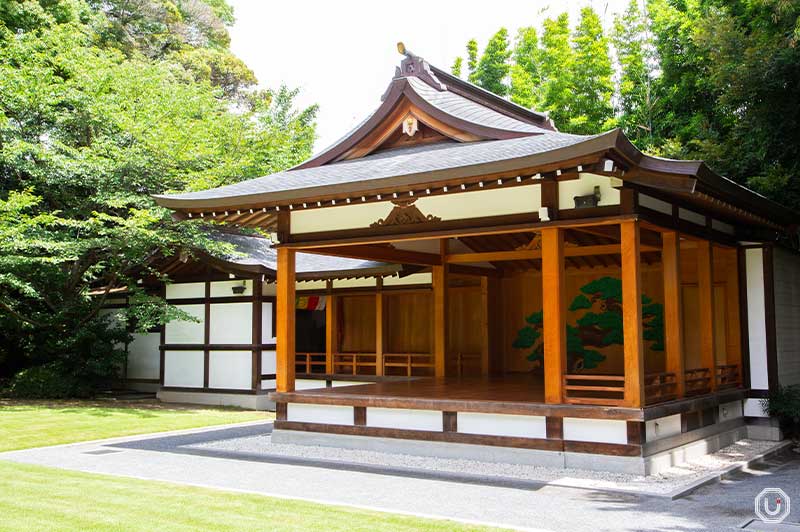
Noh theater
Pay attention to the pine tree painting decorating the stage. Although it’s based on traditional design, it incorporates modern touches.
With so much to see, a leisurely stroll around Asagaya Shinmeigu Shrine after your visit is highly recommended.
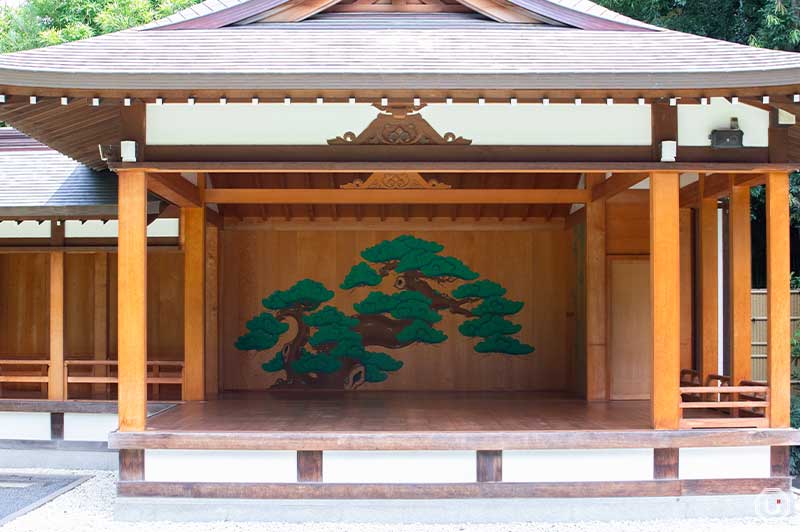
Shrine Information
| Name | 阿佐ヶ谷神明宮 Asagaya Shinmeigu Shrine |
|---|---|
| Address | 1-25-5 Asagaya-Kita, Suginami-ku, Tokyo
|
| Access |
Asagaya Station 2-minute walk from Asagaya Station North Exit
|
| Phone number | 03-3330-4824 |
| Visiting Hours |
|
| Sacred Items | 9:00-17:00 |
| Goshuin | 9:00-17:00 |
| Omikuji | 9:00-17:00 |
| Admission fee | Free |
| Official website | https://shinmeiguu.com/ |
| Other information |
|
※The information in this article is current as of August 2024.
